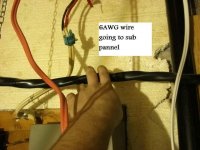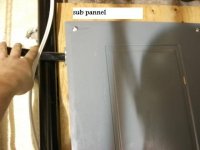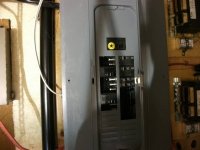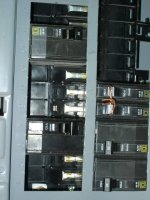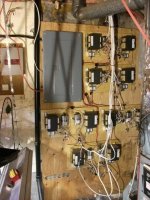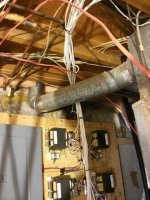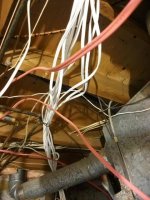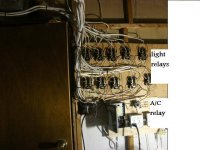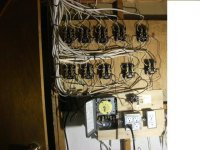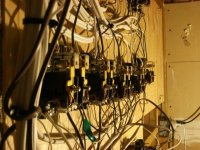I'm more comfortable with PanamaRed's pre-diagnosis of this situation. It makes total sense that the relays are not receiving the power needed to complete the switch. On a factory floor we will have lines dedicated to multiple feeds causing multiple lights to remain on with alternate power sources (Different Feeds).
Here we are connected to a single segment which the OP stated the wires are bone cold. "Service Sags are way more less likely then a service spike which is really common. This will cause the breakers to flip with the excess from the service entrance.
To be quite honest I am REALLY impressed by the electrical job that was performed Joe Fresh. Would it be possible to take a few more pictures of your electrical panel with the relays. Are you using one timer? You see I assume that the timer shuts the ballasts prior to flipping for fire safety. Being that the ballasts are off prior to the flip (at least I assume again) then it makes total sense that the flip happens on the (DC)circuit side. Since the DC side is isolated from your (AC) power. I think you can perform the test safely as PanamaRed suggested with a Multimeter. I would leave the (DC) power feeding the transformer your using for the relay but I WOULD COMPLETELY SHUT THE 240 LINE FEEDING THE LIGHTS BEFORE PERFORMING THE TEST. YOU ARE JUST TESTING THE FLIP ACTION WHICH IS (DC) BASED. WE KNOW THE 240 IS ROCK SOLID.
Obviously the setup has worked well for some time. Its a really SWEET setup! Just remember relays should generally be replaced EVERY 2 YEARS!! Good luck and please check back
.
ill get some pics up soon.....but to answer your question....
from what i know---ballasts are wired directly to the breakers of sub-pannel(which is powered by 6 awg wire), ballasts are then wired to relays, and only one timer is used to flip the relays.
the ballasts stay on 24:7...they never turn off unless i turn the sub-pannel off.....so ballasts are running 24:7 and when timer switches it just flips the relays from one room to the other, never interupting the ballasts.

